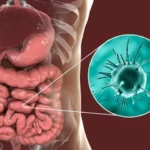Understanding Air Monitoring Systems
Air monitoring systems are essential tools that measure the quality of the air in our terrain. These systems come in colorful forms — fixed out-of-door stations, movable observers, and smart inner bias and are used in public areas, artificial zones, seminaries, and indeed homes. They track adulterants similar as particulate matter( PM 2.5 and PM10), carbon dioxide( CO2), nitrogen dioxide( NO2), ozone( O ₃), and unpredictable organic composites( VOCs). Equipped with advanced detectors and real- time shadowing technology, these systems help descry dangerous air pollutants that are frequently unnoticeable but dangerous to mortal health.
The part of Pollutant Detection
The primary function of air monitoring systems is to descry dangerous adulterants before they reach dangerous situations. Adulterants like PM 2.5 can access deep into the lungs and bloodstream, contributing to respiratory and cardiovascular conditions. feasts like nitrogen dioxide and ozone can spark asthma attacks and beget lung vexation, while VOCs are associated with headaches, fatigue, and long- term organ damage. Beforehand discovery through these covering systems enables individualities, communities, and governments to respond snappily, avoiding gratuitous exposure and health pitfalls.
Important Note: Professional air monitoring services in Utica, NY. Get accurate indoor and outdoor air quality assessments for homes, businesses, and industrial sites. Ensure a healthier environment today!
Health Benefits for the Public
One of the most poignant benefits of air monitoring systems is the protection they offer to public health. Real- time access to air quality data allows individualities with respiratory conditions similar as asthma or disinclinations to make informed opinions about their out-of-door conditioning. In seminaries, services, and homes, inner air monitoring ensures a healthier living terrain. Over time, wide use of air monitoring leads to a conspicuous decline in pollution- related ails, exigency room visits, and long- term health complications, creating healthier communities overall.
Informing Public programs and Regulations
Air monitoring data plays a vital part in shaping environmental regulations and public health programs. Governments use this data to apply emigration norms, apply vehicle restrictions, and issue health advisories during high- pollution ages. Air quality indicators( AQI), generally seen in rainfall reports or mobile apps, are grounded on this covered data. similar information helps metropolises track pollution trends, assess the effectiveness of regulations, and plan unborn structure with sustainability and public health in mind.
Empowering Communities Through Data
Beyond policy- timber, air monitoring empowers individualities and communities. numerous ultramodern systems give public access to real- time air quality data through mobile apps, dashboards, and websites. This translucency increases mindfulness and encourages residers to take action, whether by avoiding defiled areas, championing for clean energy, or pushing for stricter environmental regulations. With localized data, communities come more engaged in guarding their terrain and health.
Critical part in extremities
Air monitoring systems are especially precious during environmental extremities similar as backfires, chemical tumbles, or artificial accidents. In these situations, they give real- time data that can spark timely evacuation cautions, companion exigency responses, and inform residers of defensive measures. During campfire events, for illustration, air quality detectors can descry dangerous bank situations and prompt advisories to stay outdoors or wear masks, eventually reducing health impacts.
Challenges to wide Relinquishment
Despite their benefits, air monitoring systems do face some challenges. High- quality outfit can be expensive, particularly for large- scale deployment. Regular conservation and detector estimation are necessary to insure accurate data. also, interpreting air quality data can be delicate for the average person, pressing the need for stoner-friendly platforms and education. still, as technology becomes further affordable and accessible, these challenges are gradationally being addressed.
The Future of Air Monitoring and Health
The future of air monitoring lies in its integration with smart technology and prophetic analytics. Internet of effects( IoT) bias now allow air observers to sync with HVAC systems or mobile apps, furnishing automatic responses to poor air quality. Artificial intelligence( AI) is being used to read pollution harpoons grounded on rainfall and business patterns. In smart metropolises, wide detector networks are being stationed to cover air quality block by block. These inventions promise indeed lesser protection for public health in the times to come.
Conclusion
Air monitoring systems are further than just environmental tools they are public health safeguards. By detecting dangerous adulterants, informing policy, empowering individualities, and abetting in exigency response, these systems play a pivotal part in perfecting the air we breathe and the health issues of communities worldwide. As mindfulness and technology grow, continued investment in air monitoring is essential to insure a cleaner, safer future for everyone.















Leave a comment